How it Works: Preen Garden Weed Preventers
Here's how our Garden Weed Preventers prevent weeds before they even sprout rather than killing them after they’ve already had the chance to grow.
Many gardeners have given up on planting bulbs for spring color. A primary reason gardeners give is that they are tired of battling the animals. Buried bulbs make tasty winter treats for burrowing rodents especially squirrels, chipmunks, and voles, and flower buds and blooms in spring are attractive snacks for deer and rabbits.
The good news is that it’s mainly tulips that are at risk of ending up as animal dessert. The bad news is that’s precisely the bulb most people want to plant. So if your bulb efforts have revolved mostly around tulips, a simple solution is to try something else. Assorted wildlife occasionally pick on Dutch hyacinths and crocuses, but most everything else is left alone by and large.
Here are eight of the best spring-blooming bulbs to try if animals have been giving you fits:
Ornamental onions (Allium). This diverse family of late-spring to early-summer bloomers has a distinctive oniony odor and flavor that animals don’t like. The bulbs send up stalks of varying heights – some as high as 3 feet tall– that produce round balls of purple (sometimes white or purplish-pink) flowers. The oniony scent is barely noticeable to people unless the leaves or stems are crushed. Good examples include: ‘Globemaster’, 3'-6'. Striking with nearly softball-sized purple balls of flowers. Allium schubertii, 1'-3'. Displays spidery, rosy heads of flowers that look a bit like a star exploding.
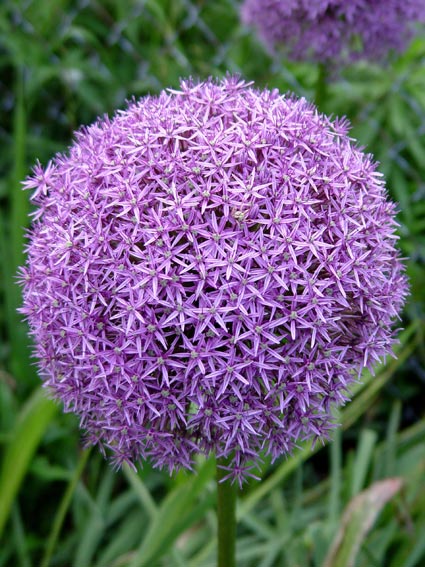
Ornamental onion ‘Globemaster’ produces balls of purple flowers nearly the size of a softball. © George Weigel
6"-30" tall. This is the biggest group that almost rivals the staggering choice available in tulips. The huge range of daffodils bloom from early to late spring; their cup-shaped flowers vary from trumpet-shaped, to small-cup and large-cup, semi double, and miniatures. Blooms may be gold, yellow, white, and pastels, including numerous bicolors of yellow-and-white, yellow-and-yellow, or pink-and-white. Some are even mildly fragrant.
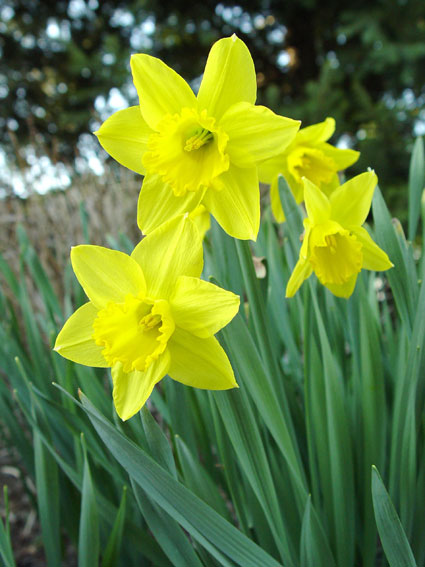
Daffodils come in a wide range of colors and bloom times. © George Weigel
5"-8" tall. These April bloomers have dangling, brilliant cobalt-blue flowers. They spread readily by seed, and are attractive as groundcovers beneath trees, or massed at the front-of-the-border. Siberian squills are among the lowest-care bulbs. The foliage dies back quickly and neatly without attention.
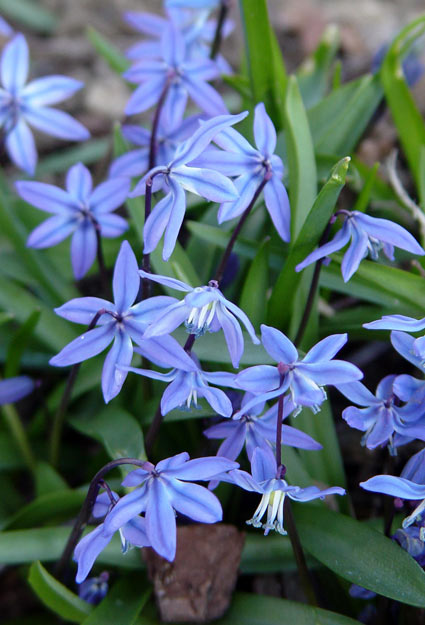
Siberian squill has cobalt-blue flowers that hang from the stems in spring. © George Weigel
6"-8" tall. Somewhat similar in size, bloom time, and growth habit to Siberian squills, glory-of-the-snow produce up-facing, star-shaped, white-eyed purple-blue flowers. They are sometimes white or pink. Also they spread readily by seed, making increasingly large drifts each year. After bloom, the foliage disappears quickly.
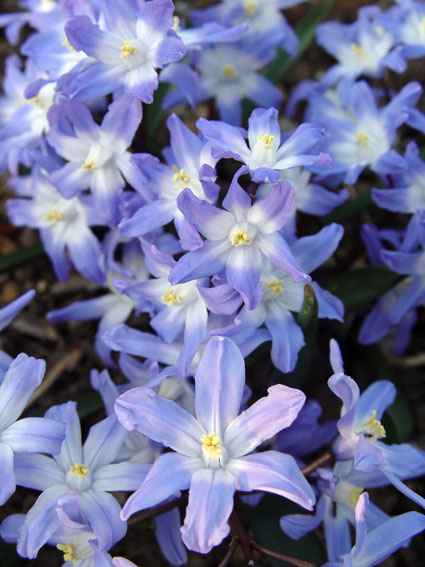
Glory-of-the-snow are early-spring bloomers, with star-shaped flowers. © George Weigel
6"-8". The name gives a good clue about these. Pure white, bell-shaped flowers, touched with green, dangle on sturdy stems. Snowdrops are among the first bulbs to emerge in spring, even poking up above the melting snow in northern climates. Some years they may bloom as early as late January into February.
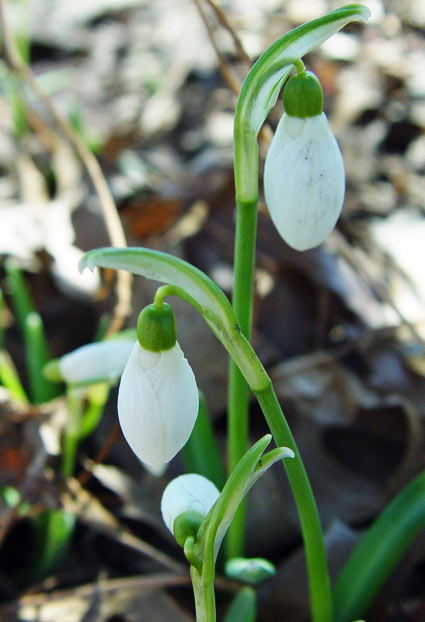
Snowdrops are among the earliest bulbs to bloom in spring. © George Weigel
6"-8". Unlike the taller and more fragrant Dutch hyacinths, grape hyacinths bloom in May with short, spiky clusters of purple, dark-blue, or white flowers. Mass the bulbs to create a sea of wall-to-wall color. Don’t get faked out by the foliage that emerges in the fall, overwinters, and dies back after bloom time in spring.
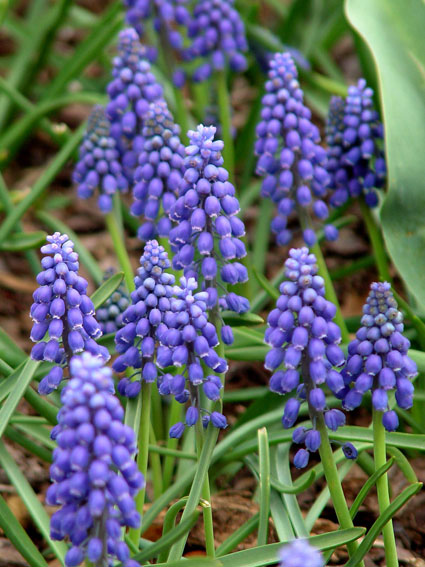
Most grape hyacinths produce tight spikes of purple flowers in mid-spring. © George Weigel
15"-18" tall. Among the latest of the spring-blooming bulbs, Spanish bluebells usually flower in May or even later. Spikes of bell-shaped pink or blue flowers emerge from among the cluster of strappy leaves.
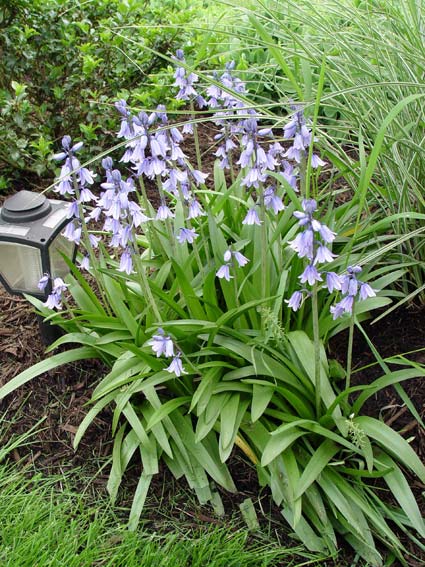
Spanish bluebells produce spikes of mainly blue flowers in May. © George Weigel
4"-6" tall. If you want crocuses but haven’t had much luck, try this particular type. Apparently animals find “Tommy” crocuses less tasty than other crocus species. These have the familiar upward-facing, cup-shaped flowers, and they bloom in early spring. Colors include purple, lavender, and rose. ‘Barr’s Purple,’ ‘Lilac Beauty’, and ‘Ruby Giant’ are popular varieties of “Tommies”.
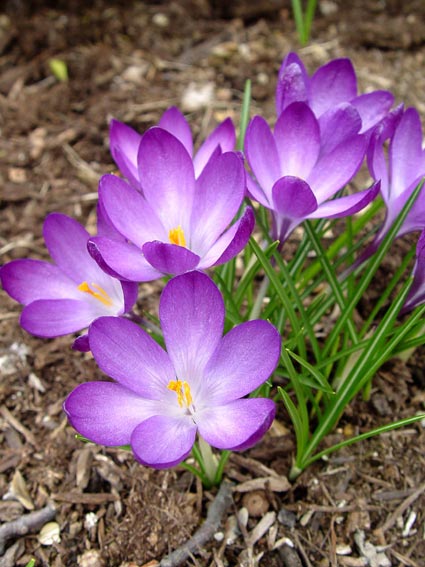
“Tommy” crocuses are the least likely species of crocus to be eaten by rodents. © George Weigel
All of the above are best planted from late September through mid-November throughout most of the United States. Pre-chilled bulbs are needed in warm, Southern climates. Bulbs need loose, well-drained soil (wet clay in winter is their No. 1 enemy other than animals), and they mostly thrive in raised beds. Plant 2 to 3 times as deep as the size of the bulb from top to bottom. The pointy end goes up.
If you’re set on growing tulips, try laying a sheet of chicken wire over the bed after planting to discourage rodent tunneling. Some people report that setting the bulbs and covering them with coarse gravel also acts as a deterrent. Otherwise, plant in containers and grow on a protected deck or terrace. As a last resort, you can plant the bulbs in a buried wire cage. First, excavate the bed down to the planting depth of the bulbs (typically about 6 inches for tulips). Lay chicken wire across the bottom, plant the bulbs, and then fold up all four sides of the wire as you backfill the hole with soil. Lay another sheet of chicken wire across the top to completely enclose the planting.
A few other anti-animal steps worth trying: